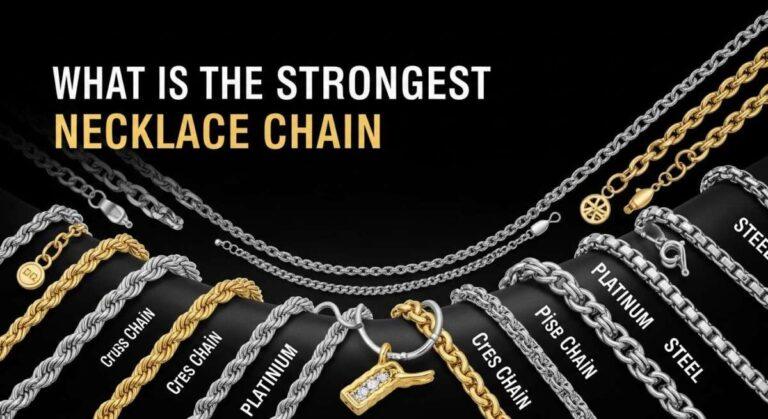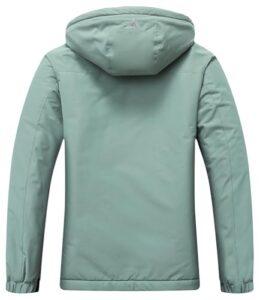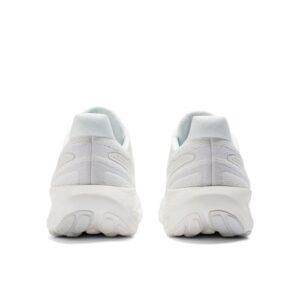Are you looking for a necklace chain that can keep up with your lifestyle? Whether you want something durable for everyday wear or a chain that can hold a heavy pendant without breaking, choosing the strongest necklace chain is key.
But with so many options out there, how do you know which one will truly stand the test of time? You’ll discover exactly what makes a necklace chain strong and which styles you should consider to protect your valuable jewelry.
Keep reading to find the perfect chain that combines toughness with style, so you never have to worry about it snapping or losing its shine.
Types Of Necklace Chains
Necklace chains come in many styles. Each chain type has its own strength and look. Some chains are delicate, while others are tough and durable. Choosing the right chain depends on style and how strong it needs to be. Below are popular types of necklace chains and their features.
Cable Chains
Cable chains have simple, oval-shaped links. These links connect one after another. They are classic and easy to repair. Cable chains are strong but lightweight. They work well for everyday wear.
Curb Chains
Curb chains have flat, twisted links. The links lie flat when worn. This design makes the chain sturdy. Curb chains resist tangling and breakage. They are a popular choice for men’s necklaces.
Figaro Chains
Figaro chains have a pattern of short and long links. This pattern looks stylish and unique. Figaro chains are strong and flexible. They hold up well with pendants or charms.
Rope Chains
Rope chains twist small links together. They look like a rope or spiral. This design adds thickness and strength. Rope chains are very durable and less likely to break.
Box Chains
Box chains use square-shaped links. These links connect to form a smooth chain. Box chains are strong and have a clean look. They hold pendants securely without catching.
Snake Chains
Snake chains have round, wavy metal plates. They fit closely together, making a smooth chain. Snake chains are flexible but less strong. They can kink if bent sharply.
Herringbone Chains
Herringbone chains have thin, flat links arranged in a pattern. This pattern makes the chain lie flat on the skin. Herringbone chains look elegant but are fragile. They can bend or kink easily.
Materials And Their Strength
Choosing the strongest necklace chain depends largely on the material. Each metal has unique qualities that affect its strength and durability. Understanding these materials helps in picking the right chain for daily wear or special occasions.
Gold And Its Alloys
Pure gold is soft and bends easily. Jewelers mix it with other metals to make it stronger. These mixtures are called alloys. 14k and 18k gold are common alloys that balance strength and shine. The higher the karat, the softer the gold. Alloys with copper or silver increase toughness.
Sterling Silver
Sterling silver is 92.5% pure silver mixed with other metals. It is stronger than pure silver but can still scratch or bend. Silver’s strength depends on the alloy mix and chain design. Proper care keeps sterling silver chains looking good and lasting long.
Platinum
Platinum is a very strong and dense metal. It resists scratches and bending well. This metal is heavier than gold and silver. Platinum chains last many years with little wear. They keep their shine longer than other metals.
Stainless Steel
Stainless steel is a tough and affordable metal. It resists rust, scratches, and tarnish. Steel chains hold up well under rough use. They are a popular choice for casual and sporty styles. Stainless steel is harder than gold or silver.
Titanium
Titanium is a very strong and lightweight metal. It does not bend or break easily. Titanium chains are perfect for active lifestyles. This metal resists corrosion and skin allergies. Titanium offers excellent strength without adding much weight.
Chain Thickness And Durability
Chain thickness plays a big role in how strong and durable a necklace will be. Thicker chains tend to hold up better against daily wear and tear. They resist bending, breaking, and stretching more than thinner chains. Durability depends a lot on how thick the metal links are.
Choosing the right thickness means balancing strength with how comfortable the necklace feels. A very thick chain might last long but could feel heavy or stiff. A thinner chain might be light and easy to wear but may not last as long under stress. Understanding chain thickness helps pick the best necklace for strength and comfort.
Gauge And Weight
Gauge measures the thickness of each link in the chain. The lower the gauge number, the thicker the metal. Heavier chains often have a lower gauge. Weight adds to strength because more metal means the chain can hold more tension. Gauge and weight together tell us how sturdy a necklace is.
Impact On Strength
Thicker chains resist breaking and kinking better than thin ones. Strong links do not bend easily. Weight adds to the chain’s ability to stay intact under pressure. Thick chains can carry heavier pendants without damage. Strength depends on both link size and overall chain thickness.
Comfort Vs. Durability
Thicker chains can feel heavy and less flexible. This may cause discomfort during long wear. Thin chains are lighter and more flexible but break easier. Many choose a medium thickness for a good balance. Comfort and durability must work together for a good necklace.
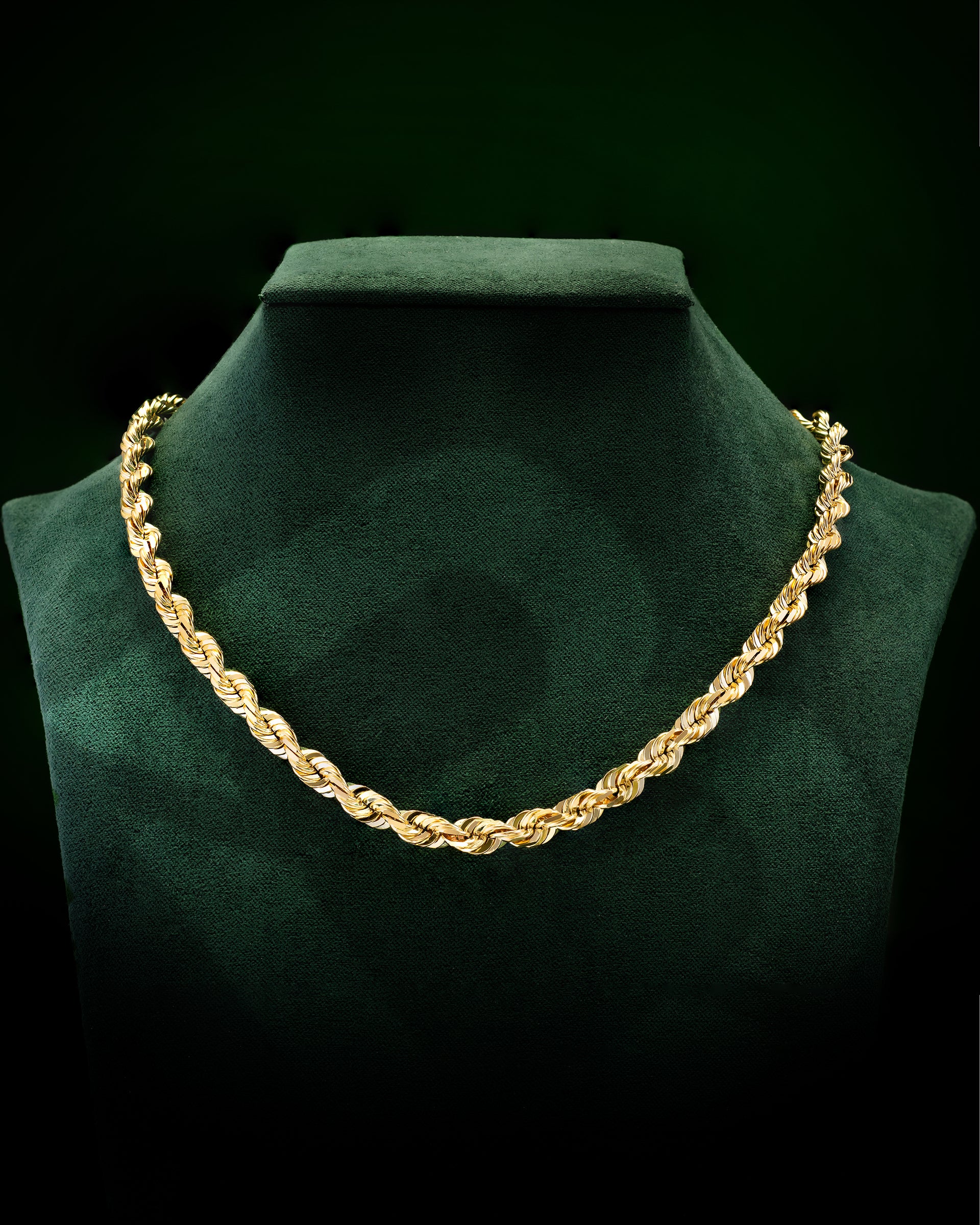
Credit: lovebling.com
Weave Patterns And Their Impact
The weave pattern of a necklace chain greatly affects its strength and look. Chains with different weaves show unique traits in durability and style. Understanding how these patterns work helps in choosing the strongest necklace chain.
Tightness Of Weave
Tight weaves make the chain stronger. The links fit closely, reducing gaps and movement. This closeness stops the chain from bending or breaking easily. Loose weaves, with bigger gaps, feel softer but can tear more quickly. Tight weaves hold their shape better over time.
Flexibility Vs. Strength
Some weaves balance strength and flexibility. Flexible chains move smoothly and feel comfortable. But too much flexibility can weaken the chain. Stiff weaves offer more strength but less comfort. Choosing the right weave means finding a good mix of both.
Common Durable Patterns
Curb and Figaro chains are popular for their toughness. Rope chains twist tightly, making them very strong. Box chains have square links that resist bending. These patterns hold up well under daily wear and tear. They are smart choices for strong necklace chains.
Clasp Types And Security
Choosing the right clasp is key for a strong necklace chain. The clasp holds the necklace securely around your neck. It affects both safety and ease of use. Some clasps are stronger and safer than others.
Below are common clasp types. Each has different security levels and strengths.
Lobster Clasp
The lobster clasp is very strong and reliable. It has a spring-loaded mechanism that opens and closes tightly. This clasp stays closed well during daily activities. It suits heavy or valuable chains. Easy to use with one hand.
Spring Ring Clasp
Spring ring clasps are smaller and lighter. They use a spring inside a small ring to open and close. This clasp offers decent security but can be tricky to fasten. Best for lighter chains. Not ideal for heavy or thick necklaces.
Box Clasp
Box clasps lock with a tab inside a box-shaped closure. They provide strong security for expensive or heavy chains. This clasp type often includes a safety latch. It reduces the chance of accidental opening. Common in fine jewelry.
Magnetic Clasp
Magnetic clasps use magnets to hold the chain ends together. They are very easy to fasten and unfasten. Not the best for heavy chains or high activity. Strong magnets improve security but can still come apart. Good for convenience and light wear.
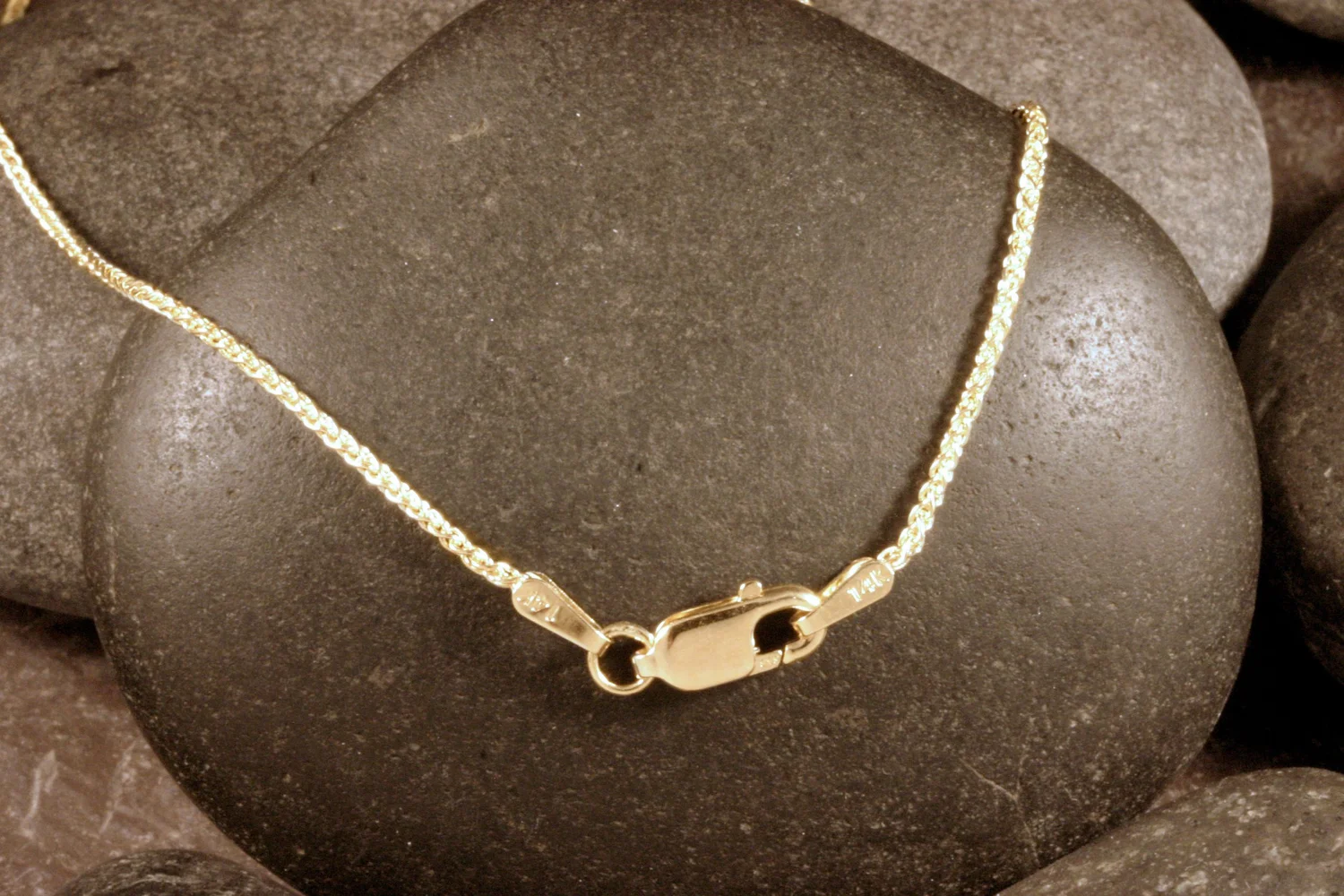
Credit: designsbysr.com
Care Tips For Longevity
Taking care of your strongest necklace chain helps keep it looking new. Proper care stops damage and wear. Small steps make your chain last longer and shine bright.
Cleaning Techniques
Clean your necklace gently with mild soap and warm water. Use a soft cloth or a soft toothbrush to reach small areas. Rinse well and dry with a clean cloth. Avoid harsh chemicals that can dull or damage the metal.
Storage Recommendations
Store your necklace in a soft pouch or a jewelry box. Keep it separate from other jewelry to avoid scratches. Choose a dry place to prevent moisture and tarnish. Hanging your chain can stop it from tangling.
Avoiding Damage
Remove your necklace before swimming, showering, or exercising. Avoid contact with perfumes, lotions, and hairspray. Be careful not to pull or tug on the chain. Handle it gently to keep links strong and secure.
Choosing The Right Chain For Your Lifestyle
Choosing the right necklace chain is important for daily comfort and style. Your lifestyle plays a big role in this choice. Different chains suit different activities and occasions. Picking the strongest chain that fits your life helps it last longer and look great. Here are some tips to match chains with your lifestyle.
Active Lifestyle Chains
Chains for an active lifestyle must be strong and durable. Look for thick, tightly linked chains like curb or rope styles. These resist breaking and bending during sports or work. Avoid thin chains that can snap easily. Metals like stainless steel or solid gold hold up well. Choose chains with secure clasps to prevent loss.
Everyday Wear Chains
For everyday use, comfort and style matter most. Lightweight chains like box or snake chains work well. They feel smooth on the skin and suit casual outfits. Strong metals such as sterling silver or gold fill offer good durability. Pick chains that do not tangle or catch on clothes. A simple design fits most looks.
Special Occasion Chains
Special occasion chains focus on elegance and shine. Thinner chains with unique designs, like Figaro or wheat chains, add charm. Precious metals such as gold or platinum bring luxury. These chains should be strong enough to hold pendants or charms. They are perfect for weddings, parties, or formal events.

Credit: designsbysr.com
Frequently Asked Questions
What Is The Strongest Type Of Necklace Chain?
The strongest necklace chains are typically made from solid gold or stainless steel. Chains like the Cuban link, rope, and box chains offer high durability and resistance to breakage, making them ideal for everyday wear and heavy pendants.
Which Metal Makes The Strongest Necklace Chain?
Platinum and stainless steel are among the strongest metals for necklace chains. They resist corrosion, bending, and breaking. Gold chains are strong too but can vary based on karat purity and construction style.
How To Identify A Durable Necklace Chain?
Look for tightly interlocked links and solid metal construction. Chains with thicker links and high-quality metal last longer. Avoid hollow or plated chains, as they wear out quickly and break easily.
Are Cuban Link Chains The Strongest Necklace Chains?
Yes, Cuban link chains are known for their strength. Their thick, interlocking links provide excellent durability. This chain style is popular for both fashion and strength purposes.
Conclusion
Choosing the strongest necklace chain depends on your needs and style. Chains like the rope, curb, and box are known for their durability. Each has its own way of resisting breakage and wear. Think about how often you will wear it and what activities you do.
Strong chains last longer and hold pendants securely. Always pick a chain that fits your lifestyle. This helps you enjoy your jewelry without worry. A sturdy chain combines beauty with strength perfectly.

Madison Clark is a footwear expert and the voice behind MyStyleGrid.com. She specializes in honest shoe reviews, style tips, and practical guides to help readers find the perfect pair for any occasion. With years of experience in blogging and content creation, Madison makes footwear knowledge simple, stylish, and easy to follow.

